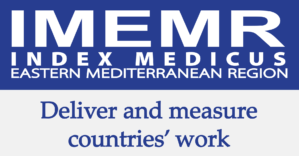Surgeons’ awareness about ergonomics in the operation theatre
DOI:
https://doi.org/10.53685/jshmdc.v5i2.286Keywords:
Awareness, Ergonomics, Operation theatre, Surgeons, Musculoskeletal symptomsAbstract
Background: Musculoskeletal symptoms are common among surgeons who work in an environment that is not ergonomically ideal.
Objective: To determine the surgeons’ awareness of ergonomics in the operation theatre and factors that may lead to musculoskeletal symptoms.
Methods: A cross-sectional study was conducted from January to March 2024 in the Department of General Surgery, Pakistan Institute of Medical Sciences, Islamabad, Pakistan. The survey was conducted among 110 surgeons working in different surgical specialties. A 30-item questionnaire was designed to ascertain knowledge, attitude, and practices about posture ergonomics among surgeons and was distributed online using Google Forms. The severity of pain was calculated using the Visual Analogue Score (VAS). Factors that contribute to musculoskeletal symptoms were also investigated. Data was collected and analyzed using SPSS version 26
Results: A total of 74 doctors responded to the questionnaire. Out of these, 71.6% were males and 28.4% were females, with a mean age of 38.87±11.4 years. The majority (91.9%) had some discomfort or pain during/after performing the surgery. Backache was the most common (22.8%), followed by pain in the legs (21.4%), neck (17.8%), shoulders (16.6%), hands (14.6%), and wrists (6.8%). Prolonged standing in the same position (52.7%), bad posture (33.8%), and performing a large number of surgeries daily (33.8%) were the major factors for their symptoms. Most surgeons (85.1%) knew about ergonomics in general. Only 32.4% of responders had received ergonomics education, while 67.6% did not.
Conclusion: There is a deficiency of awareness of ergonomics among surgeons. Lack of ergonomics training and inadequate operation theatre resources are the leading causes of surgeons' pain with postural ergonomics.
References
Aaron KA, Vaughan J, Gupta R, Ali N-E-S, Beth AH, Moore JM, et al. The risk of ergonomic injury across surgical specialties. PLoS One. 2021; 16(2): e0244868. doi: 10.1371/journal.pone.0244868
Ho TT, Hamill CS, Sykes KJ, Kraft SM. Work-related musculoskeletal symptoms among otolaryngologists by sub-specialty: A national survey. Laryngoscope. 2018; 128(3): 632–640. doi: 10.1002/lary.26859
Schlussel AT, Maykel JA. Ergonomics and musculoskeletal health of the surgeon. Clin Colon Rectal Surg. 2019; 32(6): 424–434. doi: 10.1055/s-0039-1693026
Cavanagh J, Brake M, Kearns D, Hong P. Work environment discomfort and injury: An ergonomic survey study of the American Society of Pediatric Otolaryngology members. Am J Otolaryngol. 2012; 33(4): 441–446. doi: 10.1016/j.amjoto.2011.10.022
Agarwal S, Steinmaus C, Harris-Adamson C. Sit-stand workstations and impact on low back discomfort: a systematic review and meta-analysis. Ergonomics. 2018; 61(4): 538–552. doi: 10.1080/00140139.2017
O'Reilly K, McDonnell JM, Ibrahim S, Butler JS, Martin-Smith JD, O'Sullivan JB, et al. Biomechanical and ergonomic risks associated with cervical musculoskeletal dysfunction amongst surgeons: A systematic review. Surgeon. 2024; 22(3): 143-149. doi: 10.1016/j.surge.2024.04.003
Shrestha O, Basukala S, Thapa N, Karki S, Shrestha L, Shrestha M, et al. Ergonomics in the operation-theatre: A healthcare provider-based cross-sectional study. Ann Med Surg (Lond). 2023; 86(1): 127-132. doi: 10.1097/MS9.0000000000001538
Karimian F. Ergonomics for the surgeon. Int J Surg Surgical Tech. 2022; 8(2): 1-3. doi: 10.23880/ijsst-16000168[3]
Koshy K, Syed H, Luckiewicz A, Alsoof D, Koshy G, Harry L. Interventions to improve ergonomics in the operating theatre: A systematic review of ergonomics training and intra-operative microbreaks. Ann Med Surg (Lond). 2020; 55: 135-142. doi: 10.1016/j.amsu.2020.02.008
Buddle V, Nugent R, Jack RA 2nd, DeLuca P. Orthopedists report high prevalence of work-related pain and low ergonomic awareness. Orthopedics. 2023; 46(5): 280-284. doi: 10.3928/01477447-20230224-05
Catanzarite T, Tan-Kim J, Whitcomb EL, Menefee S. Ergonomics in surgery: A review. Female Pelvic Med Reconstr Surg. 2018; 24(1): 1-12. doi: 10.1097/SPV.0000000000000456
Macharia KM, Sitati FC. The prevalence, patterns and factors associated with work-related musculoskeletal symptoms among surgical residents in Kenyatta National Hospital, Nairobi, Kenya. East Afr Orthop J. 2024; 18(1): 03-09. doi: 10.4314/eaoj.v18i1.2
Gorce P, Jacquier-Bret J. Work-related musculoskeletal disorders among surgeons: A bibliometric analysis from 1982 to 2024. Explor Musculoskelet Dis. 2024; 2: 317–335. doi: 10.37349/emd.2024.00059
Farhina M. Frequency of musculoskeletal pain among surgeons in Karachi. Case Rep in Clin Med. 2022; 11: 297-305. doi: 10.4236/crcm.2022.118042
Yizengaw MA, Mustofa SY, Ashagrie HE, Zeleke TG. Prevalence and factors associated with work-related musculoskeletal disorder among health care providers working in the operation room. Ann Med Surg. 2021; 72: 102989. doi: 10.1016/j.amsu.2021.102989
McQuivey KS, Deckey DG, Christopher ZK, Rosenow CS, Mi L, Spangehl MJ, et al. Surgical ergonomics and musculoskeletal pain in orthopaedic surgery residents: A multicenter survey study. J Am Acad Orthop Surg Glob Res Rev. 2021; 5(3): e20.00119. doi: 10.5435/JAAOSGlobal-D-20-00119
Kokosis G, Dellon LA, Lidsky ME, Hollenbeck ST, Lee BT, Coon D. Prevalence of musculoskeletal symptoms and ergonomics among plastic surgery residents: Results of a national survey and analysis of contributing factors. Ann Plast Surg 2020; 85(3): 310–315. doi: 10.1097/SAP.0000000000002147
Epstein S, Sparer EH, Tran BN, Ruan QZ, Dennerlein JT, Singhal D et al. Prevalence of work-related musculoskeletal disorders among surgeons and interventionalists: A systematic review and meta-analysis. JAMA Surg. 2018; 153(2): e174947. doi: 10.1001/jamasurg.2017.4947
Külekçioğlu S, Dilektaşlı E. The role of ergonomics training and posture exercises in surgeons’ musculoskeletal system disorders. Turk J Surg. 2024; 40 (3): 204-211. doi: 10.47717/turkjsurg.2024.6413
Janki S, Mulder EEAP, IJzermans JNM, Tran TCK. Ergonomics in the operating room. Surg Endosc. 2017; 31(6): 2457-2466. doi: 10.1007/s00464-016-5247-5
Riley C, Wilson C, Andrzejowska I, Giri P. Reducing musculoskeletal pain in the operating theatre. BJA Educ. 2022; 22(4): 154-159. doi: 10.1016/j.bjae.2021.12.005
Downloads
Published
How to Cite
Issue
Section
License
Copyright (c) 2024 Masab Nawaz, Prof. Dr S H Waqar, Zakir Jamal, Fatima Shahzad

This work is licensed under a Creative Commons Attribution-NonCommercial 4.0 International License.
You are free to:
- Share — copy and redistribute the material in any medium or format
- Adapt — remix, transform, and build upon the material
- The licensor cannot revoke these freedoms as long as you follow the license terms.
Under the following terms:
-
Attribution — You must give appropriate credit, provide a link to the license, and indicate if changes were made. You may do so in any reasonable manner, but not in any way that suggests the licensor endorses you or your use.
-
Non Commercial — You may not use the material for commercial purposes.
-
No additional restrictions — You may not apply legal terms or technological measures that legally restrict others from doing anything the license permits.




















